Biology, a mother science concerns everything related to life. It considers both plant and animal kingdom and also the world that we can’t see but abounded with minute life. Considering the aspects of living beings, this science sometimes needs to go beyond the living world to understand the correlation between the biotic and abiotic entities. Today we are going to understand such a branch of biology known as ecology and ecosystem with reference to the brief design of the earth both interior and outer.
So, what is ecology?
Schienen and Willig (2008) gave the definition of ecology as such,
‘Ecology is the study of the spatial and temporal patterns of the distribution and abundance of organisms including causes and consequences.’
In nature, there are interactions among the communities of organisms and their abiotic surroundings. There are both structural and functional reciprocal relationships. This type of relationship is very important to understand the distribution and abundance of organisms all around the globe. For example, the relationship with the abiotic saline environment and the salinity tolerant plants are studied in ecology. The xeric environment and the plants that grow there are studied here as well. So this science particularly studies the relationship between organisms and the environment, not separately but together.
- Ecology is similar to the terms ‘Biogenocenosis’ and ‘Microcosm’.
- Ecosystem is delimited by more or less uniform sections of the biosphere (where life exists).
Ecosystem
- The community of organisms plus environmental conditions.
- Each ecosystem has a certain spatial extent. So, different ecosystems form a diverse mosaic in the biosphere. The principles by which all these ecosystems operate wholly equally well for the biosphere and for the natural and artificial systems (e.g.. Kaptai lake, aquarium, rice field) are:
(Two characteristics of ecosystem)
- Inertia: Prevent change.
- Resilience: Shift to previous condition if a change occurs up to the threshold level.
State of Equilibrium
We know that the net transfer of energy in a chain always proceeds in one direction- from the sun, through the primary producer to the decomposers. Unlike the unidirectional flow of energy, matter is cycled. Each cycle of elements takes place at three distinct levels.
- In the plant
- In the ecosystem
- In the biosphere
Ecosystem possesses an intrinsic (internal) mechanism for self-regulation. It is based on the ability of an individual organisms, populations and communities to adopt and on the properties of the producers. If the supply of energy is sufficient and recycling of the matter undisturbed a state of equilibrium is obtained and the state is maintained without notable changes.
In addition to the food chain, there are other kinds of interdependence and interaction relationships among the organisms and in an ecosystem. It may either benefit and hamper individuals like any other organism.
For example pollination, symbiosis, allelopathy, parasitism etc..
(Like any other organisms, man is an environment dependent member of the living community. Man is also an environmental factor with respect to the member of the ecosystem. He is a conscious and purposeful shaper of nature. Because he intervenes with the natural process and creates habitat for his own living.)
Vertical Structure of the World
- Biosphere
- Lithosphere
- Hydrosphere
- Atmosphere
Biosphere
The biosphere is that part of the earth’s surface where life exists. In the vertical section, it extends from the deepest part of the ocean floor (Mariana Trench: 11,000 m below the sea level to at least 10,000 m above the sea level). In this region, bacteria and fungi can be found. Actually, this region is very narrow possibly less than 200 m from the sea level.
The radius of the earth is approximately 6,370 km or around 4,000 miles. The vertical structure of the earth’s atmospheric surface and interior is illustrated in Figures 1 and 2.
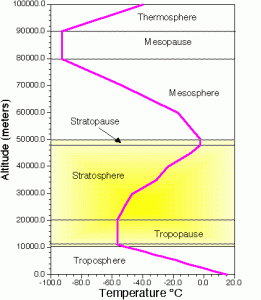
Source: http://www.atmo.arizona.edu/students/courselinks/fall12/atmo336/lectures/sec1/structure.html
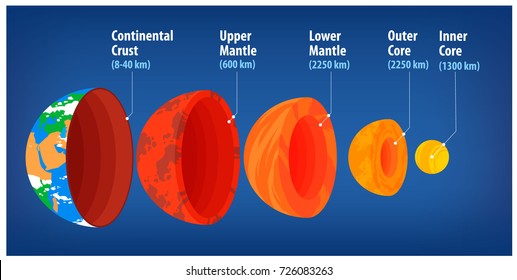
Crust:
- Continental crust
- Oceanic crust
Continental crust:
- It is around 20-70 km (average 30 km).
- Granite (AlSiOx), metamorphic rock.
- Relatively low density (2.7 gm/cc).
- 125 km above sea level (?).
- Old (upto 3.8 billion years).
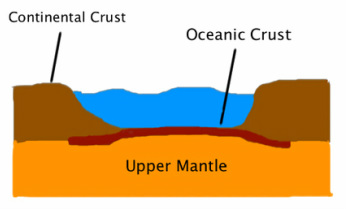
Continental and Oceanic crust.
Source: http://faasciencecrust.weebly.com/continental-and-oceanic-crust.html
Oceanic crust
- Forms the deep seafloor.
- 5 to 10 km (average 7 km).
- Basalt rocks (Fe, Mg, Al. Na, Ca, SiOx), Igneous rocks.
- Relatively dense (approximately 3 gm/cc).
- Negatively buoyant.
- Surface: 4 km below sea level.
- Young (less than or equal to 160 to 190 million years).
- Covers 71% of the total earth’s surface.
Lithosphere
- Crust + solid outer mantle.
- 70-250 km thick.
- Thicker under continent and thinner under oceans.
- Broken into many plates known as lithospheric plate.
- Plates float on soft asthenosphere.
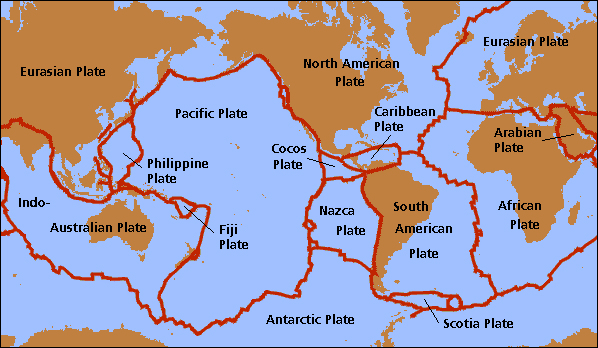
Credit: Dylan Prentiss, Department of Geography, University of California, Santa Barbara
The surface area of the earth:
Hydrosphere
Water storage in the hydrosphere
| Storage | Volume (1000 km3) |
| Average in stream channel | 1 |
| Vapor and cloud in the atmosphere | 13 |
| Soil water (above water table) | 67 |
| Saline lakes and inland seas | 104 |
| Fresh water lakes | 125 |
| Ground water | 8300 |
| Ice crops and glaciers | 29200 |
| Oceans | 1370000 |
- 1 km3 = 264 billion gallons
Composition of sea water: (Only elements that are more than 1000 MT/km3 in quantity)
| Water | 991,000,000 |
| Na | 19,600,000 |
| Cl | 10,900,000 |
| Mg | 1,400,000 |
| S | 920,000 |
| Ca | 420,000 |
| K | 39,000 |
| Br | 67,000 |
| C | 29,000 |
| Sn | 8,300 |
| B | 5,000 |
- Sequestration: Carbon capture and store.
Atmosphere
The earth’s atmosphere is the reason why nature flourished on this planet. It is somewhere rough, somewhere very convenient and many times good and sometimes scary. The earth’s atmosphere is a great puzzle for geologists as it can shift its temper anytime and anywhere with or without any symptoms. And we all are affected by it. However, to understand this creation of mother earth the weather scientists divided this vertical unseen covering around the globe into some layers based on the temperature that prevails.
Variation of atmospheric temperature with height:
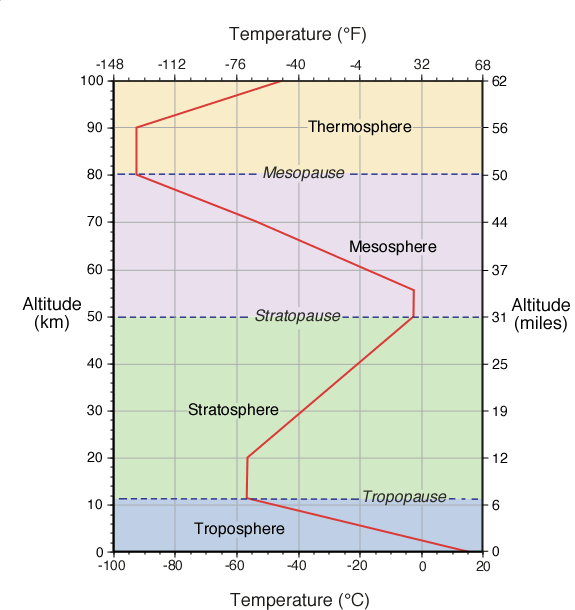
- The terms tropopause, mesopause and stratopause apply to those boundaries where the temperature is constant with height.
- Within each region’s temperature changes with height.
- Lives essentially occur in the troposphere.
- The height of Mount Everest is approximately 9 Km.
This article is the beginning of a series on Physiological ecology that will further focus on the things that we have discussed here. So more is coming.
Stay connected.
Revised by
Best safe and secure cloud storage with password protection
Get Envato Elements, Prime Video, Hotstar and Netflix For Free
Best Money Earning Website 100$ Day
#1 Top ranking article submission website
- Md. Siddiq Hasan on 15 November 2020.
 Plantlet The Blogging Platform of Department of Botany, University of Dhaka
Plantlet The Blogging Platform of Department of Botany, University of Dhaka
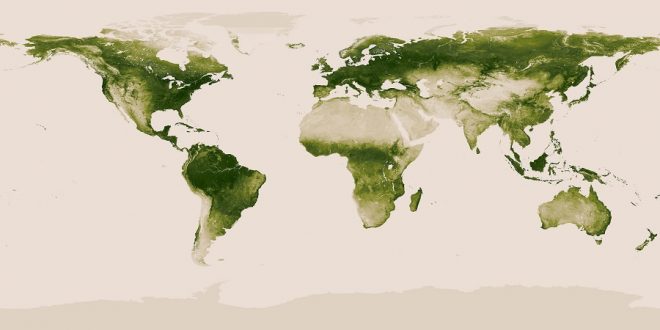





The point of view of your article has taught me a lot, and I already know how to improve the paper, thank you.